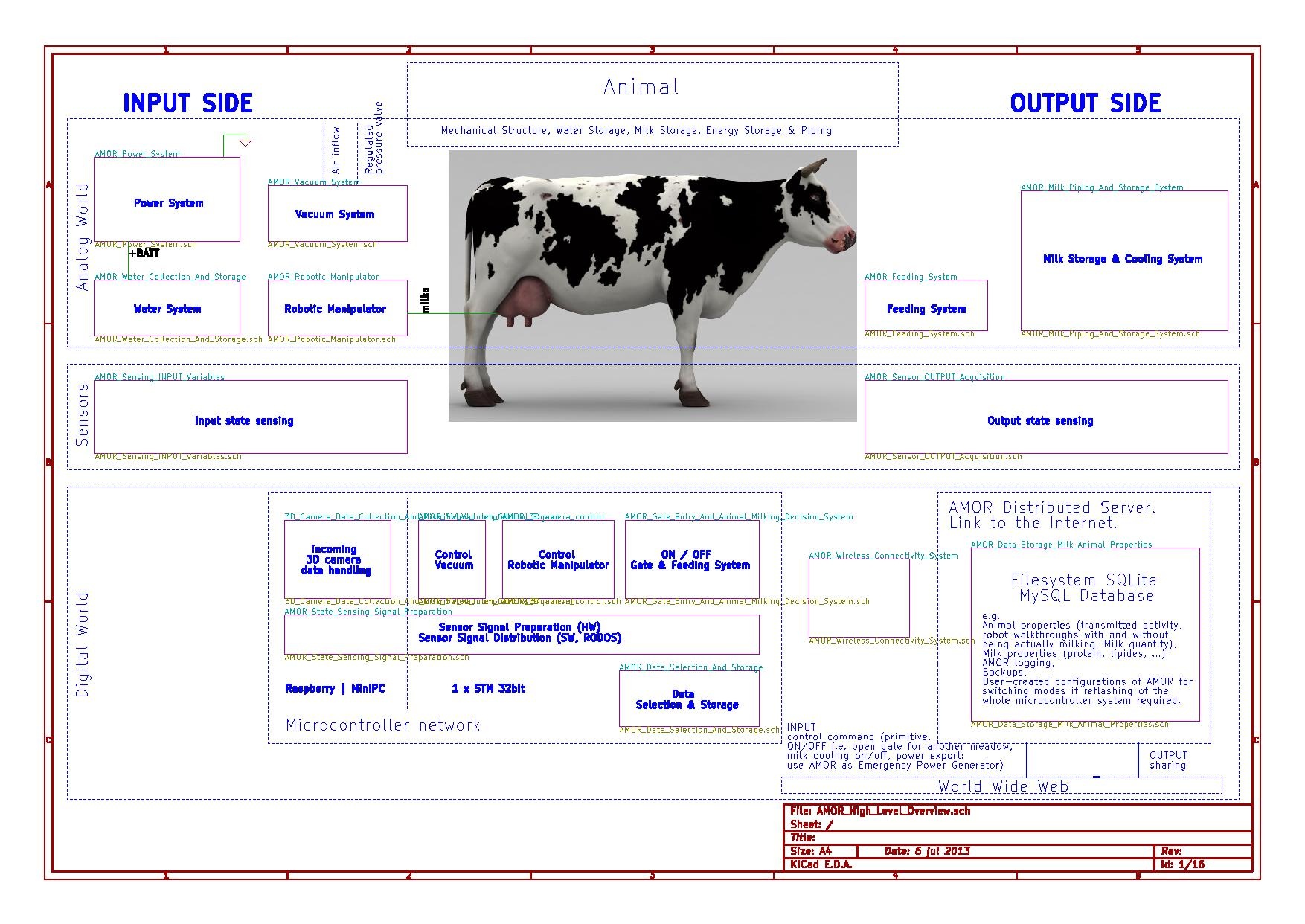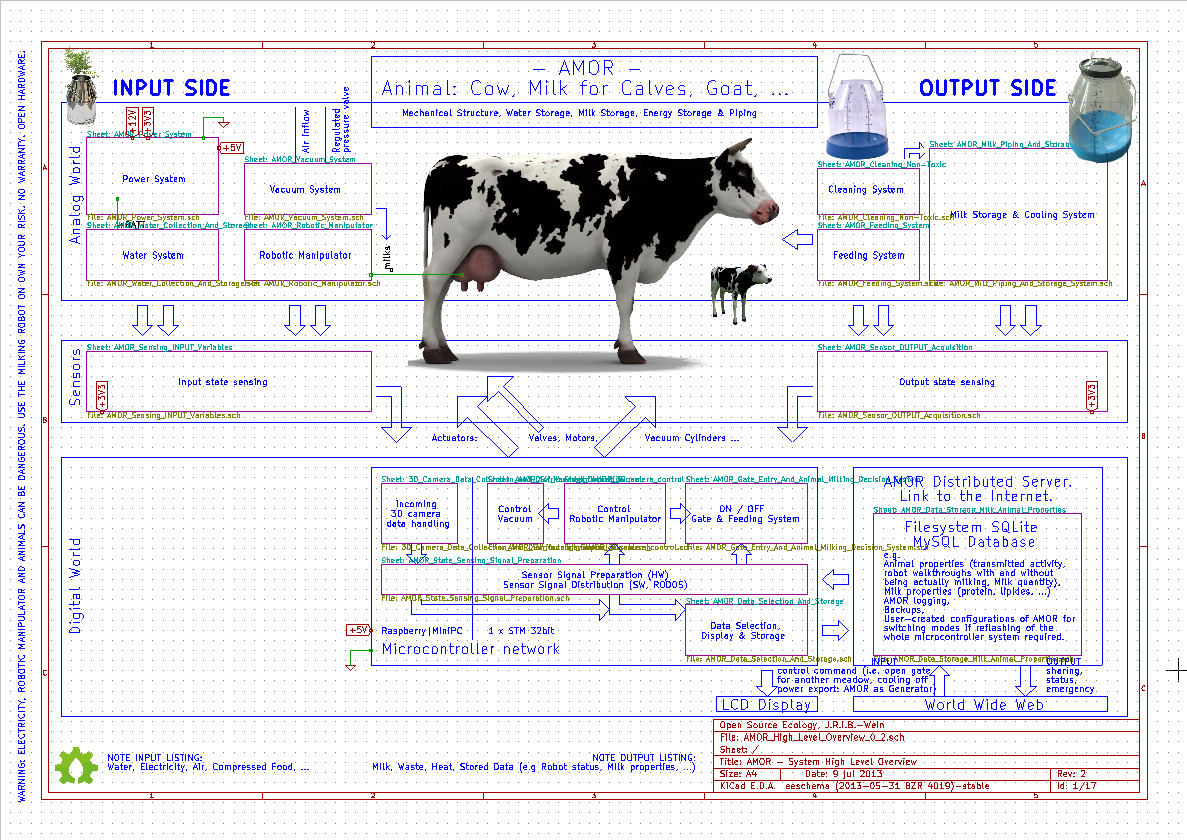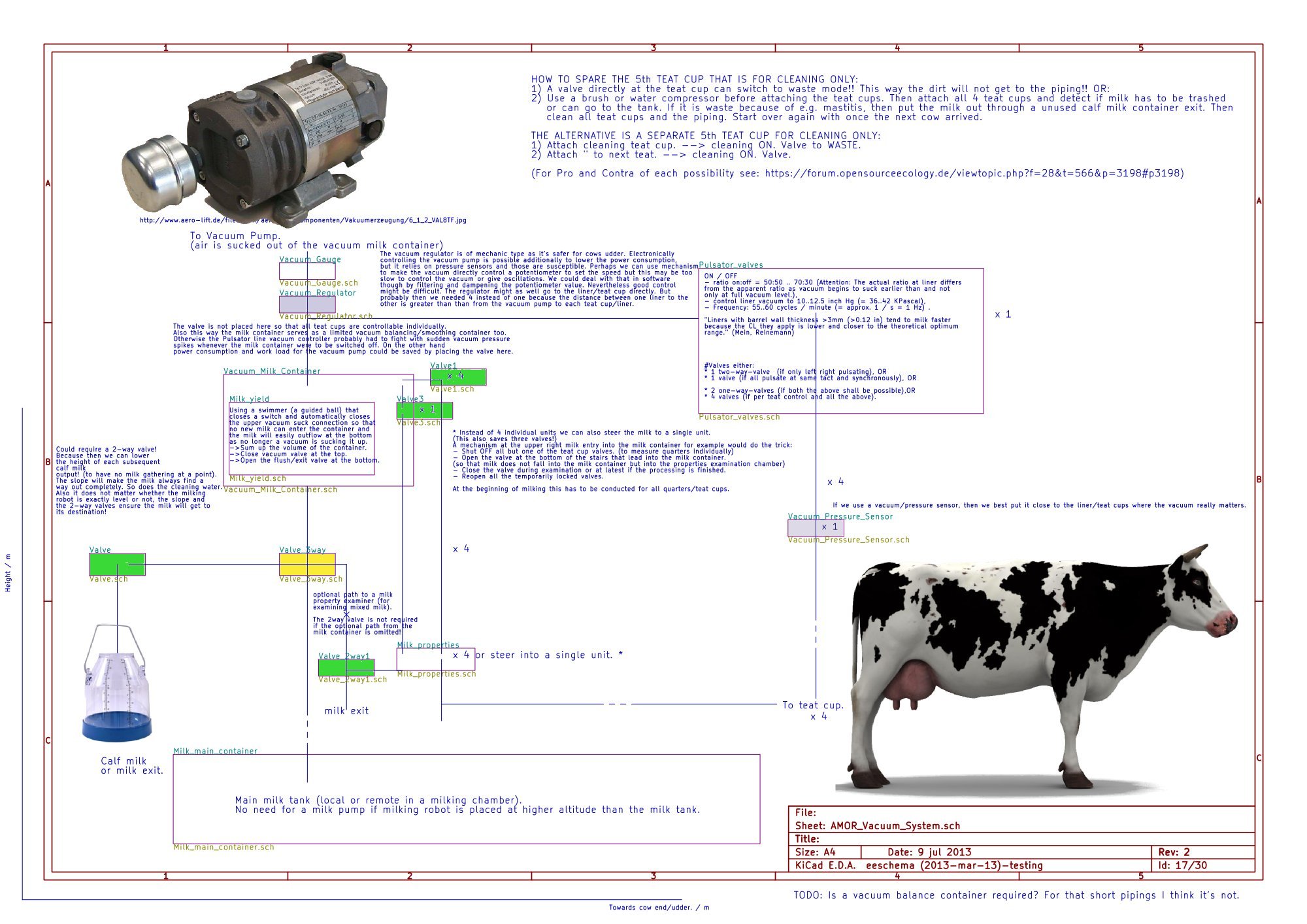Milker
--> Discussion (Forum) --> Repository (current state/most up to date) *work in progress*
Motivation for an autonomous milking ongoing robot (AMOR)
An autonomous system results in the following dis-/advantages:
- + Indepence (no more need to be there to milk morning and evening, 7days/week)
- - Machine service increases
- + Technical knowledge increases, hence perhaps some other good robot ideas may evolve.
- + Cows/Goats/Sheep can decide themselves when to get milked.
- + Concentrated feed can be delivered automatically and according to milk delivered.
- - Animals' possible illness not realized early enough. => Action taken too late. => Animal could die.
- - Gathering at Milking robot leaves behind a lot of unusable muddy terrain at entrance (doors in general).
- - Higher complexity in separation of milk for calves, though of course possible.
- + Driving out and in of cattle no longer necessary as animals can get milked outside.
- + Less material required (much shorter vacuum and milk tubes as compared to conventional non-automated distributed [at cow/goat..] milking)
- ... and several others.
An ongoing system results in the following (dis-)advantages:
- - Higher complexity.
- + Independance of any external supplies.
** Water (heavily dependent on environment) ** Power (Solar/Heat/Water/MFC replaces Grid) ** Food (difficult, nevertheless this is planned for later revisions of AMOR)
- - Redundancy of susceptible subsystems (Electronics, in general: The more complex the system the higher the vulnerability).
- + Less cabling, water pipe laying and bundled maintenance (as you can wait for enough minor errors to accumulate before taking the system apart).
- ... and several others.
High Level Overview
 PDF Version: REV2, Improved & interconnected.
PDF Version: REV2, Improved & interconnected.

Separation in Subproblems & Technological Difficulties
AMOR of several submodules:
- MECHANICAL CONSTRUCTION
- - Difficult to achieve a robust, lightweight (for truck to lift) & cheap system at the same time.
- + Rain serves as a water supply and natural (ecologic) and self-sustained washing. -> So AMOR must be waterproof!
- VACUUM SYSTEM
- - Difficult to be flexible in frequency (provide user settings) and keep it simple at the same time.
- + Could be used for several other functionality than milking (
doors, ...). => No hydraulics needed. Update: We have settled on keeping it all electric as it's much cheaper and we need electricity anyway. - Note: As the robotic manipulator should be flexible anyway as it could be hit by the cow, compressible air/vacuum could serve this purpose, too - but price of vacuum cylinders and the vulnerability to leakage remains a problem.
- Vacuum pump: Any pump should do, as the required vacuum levels are low and we don't have a lot of volume to keep free of gases in a mobile system because there is not much piping.
- STORAGE CONSTRUCTION
- Milk
- Food
- Water
- Energy
- Database for animals milk (amount, properties, ...)
- Database for organization of the cow's fertile cycle, ...
- SENSORICS
- Milk properties (flow rate, derivations of that, TODO)
- Robotic manipulator (3D camera, washing mechanism)
- Animal within milking construction => Door states.
- ELECTRONICS
- Control of Doors.
- Control of Feeding (derived from amount of milk), but also accept some user constraints (lower / upper bounds for each type of food respectively).
- Control of Robotic manipulator (joints, gripper).
- Collection & storage of the stored animal & product data.
- SOFTWARE
- Microcontroller programs capable of controlling at least two AMOR system blocks (stacked next to each other).
- compare ELECTRONICS.
Mechanic structure
The mechanic structure is free to choose. Builders might have their own preference of how to assemble a milking robot structure. Some may choose to bolt sqaure beams together, the others might prefer welding (Schweissen) steel or if they have a TIG (Tungsten) welder even aluminium.
For convenience I design and post my structure as a base and hope you give back your improvements to it by mentioning it in the forum, uploading to our repository or any other possibiity you see as appropriate.. [1]
Video of Prototyp 3 CAD
This video demonstrates how the robotic manipulator is about to work as well as the door mechanism: <video>http://www.youtube.com/watch?v=GawGF-8rVSY</video>
Vacuum System
Power system
Several ideas for autonomous power can be found in the forum. The easiest solution for now will be to attach a truck or emergency generator (UPS) or simply an extension cord. So we need a possibility to plug it into the grid (1-phase might be too low, but let's go for that first as the vacuum system needs by far less energy in a mobile robot than in a conventional one).
